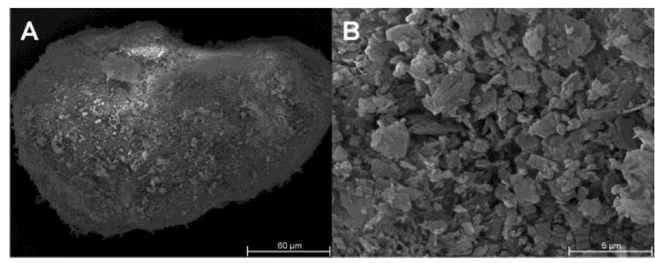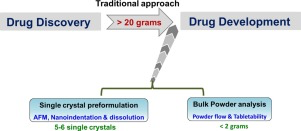- Home
- Blog
- News
- Basics
- Sources
- Agencies, Regulatory & Organisations
- CERSI Excipients Browser
- Excipient Report
- Excipient DMF List
- EXCiPACT Certified Companies
- Excipient Documentation
- Excipient EINECS Numbers
- Excipient E-Numbers
- FDA Inactive Ingredient List
- FDA GRAS Substances (SCOGS) Database
- IPEC Americas
- USP - U.S. Pharmacopeia
- Definitions
- Whitepapers / Publications
- Supplier
- Services
- Media
- Events
- 1st pharmaexcipients Poster Award
- Event Calendar
- Events featured by pharma-excipients
- 4th Annual Formulation & Drug Delivery Congress
- DDF Summit
- ExcipientFest Americas
- ExcipientFest Asia
- Global CompliancePanel
- International Conference and Exhibition on Pharmaceutics & Novel Drug Delivery Systems
- Formulation & Drug Delivery USA Congress
- Laboratory Medicine 2018
- Making Pharmaceuticals Europe
- Making Pharmaceuticals Exhibition
- Pharma Integrates
- PharmaExcipients China @CPhI China
- TTC Technology Training Center
- Jobs
- Online Sourcing
- Contact
29. September 2018
Appropriate lubrication is important in tablet manufacturing as it lowers punch sticking propensity and protects tooling by reducing friction between die wall and tablet during tablet manufacturing. Most commercial lubricants negatively impact tabletability and dissolution. A delicate balance is usually attained by trial and error to identify the optimal level of lubricant in a tablet formulation. In this work, we have evaluated the effectiveness of sodium lauryl sulfate (SLS), a surfactant, as...
01. September 2018
Flow properties of microcrystalline cellulose (MCC) excipients, Avicel PH 101 and Avicel PH 102 have been compared by using Brookfield PFT. Afterwards, the effect of hydrophobic Silica R972 as glidant has been tested on both the excipients. Hand blending is done by mixing MCCs with hydrophobic silica R972 vigorously by SAC as an underlined basis for 10 minutes and the flow properties tests are performed. During the flow function test “as received” Avicel PH 102 shows better flow function...
08. July 2018
Tricalcium citrate (TCC) was characterized as a tableting excipient for direct compression (DC) and dry granulation (DG). Significance: Brittle materials usually lead to tablets of inferior mechanical strength compared to plastic deforming materials. A brittle material exhibiting a high tabletability with the ability to retain that behavior during recompression would represent a valuable alternative to the commonly used microcrystalline cellulose. Methods: Tablets of TCC and other common...
21. June 2018
Tricalcium citrate (TCC) was characterized as a tableting excipient for direct compression (DC) and dry granulation (DG). SIGNIFICANCE: Brittle materials usually lead to tablets of inferior mechanical strength compared to plastic deforming materials. A brittle material exhibiting a high tabletability with the ability to retain that behaviour during recompression would represent a valuable alternative to the commonly used microcrystalline cellulose (MCC). METHODS: Tablets of TCC and other common...
15. June 2018
This study explores the influence of different synthesis methods and drying conditions in the preparation of sodium alginate-derivate xerogels presenting interesting disintegrant functionalities. Xerogels containing alginic acid (AA) or calcium alginate (CaA) and a mixture of both, AA/CaA, were isolated using two different drying methods oven and rotary evaporation. AA showed the best wettability behavior, in contrast to the rigid crosslinked CaA structure which showed a limited rate of water...
27. May 2018
A systematic assessment of key material attributes of active pharmaceutical ingredients (APIs) using minimal material approach is illustrated at the particulate level and bulk level. At a bulk level, flowability improvement of an API through crystal habit manipulation is exemplified. The impact of crystal structures and particulate properties (crystal habit and crystal size) on their mechanical behaviour were addressed by measuring powder tabletability. Bulk powder flow and tabletability were...
20. May 2018
The influence of particle morphology and size of alpha-lactose monohydrate on dry granules and tablets was studied. Four different morphologies were investigated: Two grades of primary crystals, which differed in their particle size and structure (compact crystals vs. agglomerates). The materials were roll compacted at different specific compaction forces and changes in the particle size distribution and the specific surface area were measured. Afterwards two fractions of granules were pressed...
09. December 2017
In the present work functional properties of new, co-processed excipients, Pharmaburst® 500, Parteck® ODT, Ludiflash® and Disintequik™ ODT, intended for direct compression of orally disintegrating tablets (ODTs), were investigated based on dynamic compaction analysis and percolation theory.
15. March 2017
Abstract In a recent study, it was demonstrated that improving flow of a model poorly flowing and poorly compactable drug substance, acetaminophen, via dry-coating while using fine excipients may promote direct compression. To validate this novel strategy, particularly for high drug loading formulations, this study investigates the effect of microcrystalline cellulose (MCC) particle size and dry-coating on powder tabletability and flowability. It was determined that blends containing fine-sized...
15. March 2016
As dry granulation as a continuous process becomes steadily more important, the interest of different materials and their processing is growing. Binders are of high importance as they have to compensate granule hardening, reduce the fines, and ensure adequate tablet tensile strengths. A simple formulation was used for roll compaction/dry granulation with subsequent tableting to produce granules and tablets, containing paracetamol (70% w/w), a filler and a binder (10%). With this formulation...









